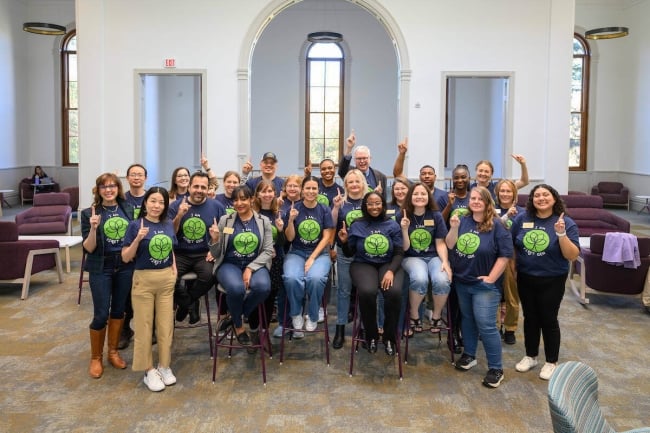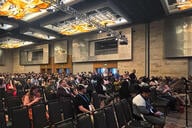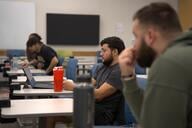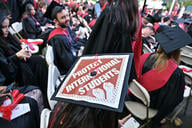You have /5 articles left.
Sign up for a free account or log in.

Professors and staff members at the University of Notre Dame identify themselves with their T-shirts to demonstrate their support for first-generation learners.
University of Notre Dame
Over half of undergraduates nationally are first-generation college students, according to 2015–16 data from NASPA. Despite making up a significant portion of learners, first-generation students often face barriers in completing their degree, with only 56 percent earning a credential after six years, compared to 40 percent of continuing-generation students.
A sense of belonging in college, one of the top predictors of student persistence, is tied to long-term outcomes after graduation.
First-generation faculty members and staff can help create a community that values and understands first-generation students, helping combat feelings of isolation, according to Forward Pathway, an education consultancy that consolidates and visualizes data about U.S. colleges. But previous research shows first-generation students are more hesitant to approach and engage with faculty members because of a lack of awareness of the benefits of these interactions.
Inside Higher Ed compiled four strategies institutions have implemented to connect first-generation community members and foster engagement between learners and personnel.
- Organize a faculty panel
As former first-generation students themselves, higher education practitioners and leaders often have advice for those navigating college for the first time. A panel discussion is one way institutions have provided insight and support to learners.
During the New Jersey college’s first-gen celebration week, Brookdale Community College faculty and administrators who were first-generation students themselves shared their academic and career journeys, challenges and tips for success with students. The event included an audience Q&A so attendees could receive advice and insight from panelists.
Similarly, Elon University in North Carolina hosted a faculty panel for first-generation students in which instructors validated the experiences of students and shared their own feelings of being first-gen.
- Create conversations
A first-generation faculty and student mixer can introduce community members and celebrate first-generation identities, as well as empower students as they chart their lives. Virginia Tech hosted an engineering-specific mixer as well as a general first-gen mixer for networking and conversations.
Colleges and universities can also match individuals to connect and share an informal dialogue on campus, perhaps sparking mentor relationships.
To celebrate National First-Generation College Celebration Week, faculty and staff members at Wichita State University could sign up to volunteer and meet with first-generation Shockers for a walk and talk experience. During the time, participants shared their college journeys. Anyone who participated in the event received a pair of WSU First-Gen Shockers socks to show off their first-gen pride.
California State Polytechnic University, Pomona, had a first-generation happy hour, First-Gen on Tap!, that connected students to mentorships with faculty and staff. Proceeds from purchases at the event also helped establish a first-generation scholarship.
- Share practitioner testimonies
Many institutions ask faculty and staff members to share reflections on their academic careers as first-generation graduates in blogs or short presentations.
Students Say
A 2021 Student Voice survey by Inside Higher Ed, conducted by College Pulse, found a majority of students lack a mentor and are unsure of how to find one.
Temple University collected stories from six faculty and staff members to reflect on their time in higher education and how the Philadelphia-based university supports first-generation learners. Similarly, the University of California, Davis, asked professors to reflect on how being first-gen influences their teaching.
The University of Texas at San Antonio invited faculty and administrators to participate in a First Gen Fest Speaker Series this fall, mapping out their experiences in a short speech.
- Provide first-gen merch
The first-generation identity is a hidden one, requiring students to disclose, which can be uncomfortable or nerve-racking. Universities can create visible signals for personnel to demonstrate their first-gen status and promote engagement among students.
The University of Notre Dame provided first-generation faculty and staff with T-shirts to wear while they taught during First Generation and Low Income Week and beyond to showcase their support for first-generation learners, according to a university press release.
How does your college or university celebrate first-generation student success? Share here.




